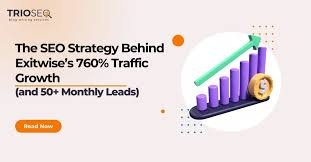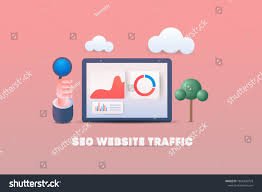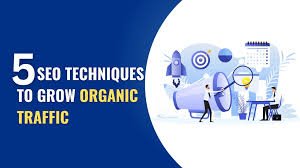Mastering Content Writing: Top Strategies for Engaging and Converting Your Audience
Content writing is at the heart of every successful digital marketing strategy. Whether you’re creating blog posts, social media updates, or website copy, mastering the art of writing compelling content is essential for engaging your audience and driving conversions. In today’s highly competitive online world, it’s not enough to simply write well—you need a strategy that makes your content work harder for you. In this post, we’ll dive into the top strategies you can use to create engaging and conversion-focused content that speaks to your audience’s needs and helps achieve your business goals. 1. Understand Your Audience and Their Pain Points Before you write a single word, it’s essential to know who you’re writing for. Successful content writing begins with understanding your audience’s needs, desires, challenges, and questions. By identifying these pain points, you can craft content that provides real solutions, which naturally leads to higher engagement and conversions. Tip: Create buyer personas to define your target audience. These personas should include demographics, interests, pain points, and goals. Use this information to tailor your content to meet the specific needs of your audience. 2. Craft Attention-Grabbing Headlines The headline is the first thing your audience will see, and it’s often the deciding factor in whether they click through to read your full content. A compelling headline should capture attention, promise value, and make the reader curious enough to want to learn more. Tip: Use power words, numbers, and emotional triggers to create curiosity. For example, instead of a generic headline like “Content Writing Tips,” try something more specific like “10 Proven Content Writing Tips That Will Skyrocket Your Engagement.” 3. Create High-Quality, Relevant Content Content quality is crucial in today’s digital landscape. Search engines and users alike favor content that provides value. High-quality content answers questions, solves problems, and offers insights that help your audience make informed decisions. Tip: Focus on writing in-depth content that covers your topic comprehensively. Avoid fluff or filler and make sure every sentence serves a purpose. When your content is helpful and relevant, it’s more likely to be shared and linked to, which can also improve your SEO rankings. 4. Tell Stories and Make It Relatable Storytelling is one of the most effective ways to engage your audience. People connect with stories, whether it’s a personal anecdote, a customer success story, or a case study. By incorporating storytelling into your content, you can humanize your brand and build a stronger emotional connection with your audience. Tip: Share real-life examples or customer testimonials in your content. Whether you’re writing a blog post or creating social media updates, weaving a narrative into your content can make it more memorable and impactful. 5. Optimize Your Content for SEO Even the most engaging content can go unnoticed if it’s not optimized for search engines. SEO (Search Engine Optimization) is crucial for making sure your content reaches the right audience. By including relevant keywords, meta descriptions, alt tags, and more, you increase your chances of ranking higher in search engine results. Tip: Perform keyword research to identify the terms your target audience is searching for. Use these keywords strategically in your headings, subheadings, and throughout your content, but avoid keyword stuffing. Additionally, optimize your meta tags and descriptions for better click-through rates. 6. Include Strong Calls to Action (CTAs) If you want to convert your readers into customers, you need a clear and compelling call to action (CTA). A CTA is an instruction to your audience on what to do next—whether it’s signing up for a newsletter, downloading an ebook, or making a purchase. Tip: Make your CTAs clear, concise, and action-oriented. Use phrases like “Get Started Today,” “Download Our Free Guide,” or “Schedule Your Free Consultation.” Ensure your CTA stands out visually (using buttons or bold text) and is placed strategically throughout your content. 7. Use Visuals to Enhance Engagement People are naturally drawn to visuals, and using images, videos, infographics, and charts in your content can significantly boost engagement. Visuals not only break up large chunks of text, making your content easier to read, but they also help explain complex concepts and capture the reader’s attention. Tip: Incorporate high-quality images and infographics that complement your content. Videos, product demos, or instructional content are particularly effective at increasing engagement and conversions, as they can help convey your message in an easier-to-understand format. 8. Promote Your Content Across Multiple Channels Writing great content is only half the battle. To maximize engagement and conversions, you need to promote your content across multiple channels. Social media, email newsletters, and influencer partnerships can all help amplify your reach and drive more traffic to your content. Tip: Repurpose your content for different platforms. For example, a detailed blog post can be turned into a series of social media updates, an email campaign, or even a video. This helps you reach a wider audience and drives more people to your website or landing page. 9. Analyze Performance and Adjust Accordingly Once your content is published, your job isn’t over. To improve future content and refine your strategy, you need to track the performance of your content. Use analytics tools like Google Analytics, social media insights, and email open rates to measure engagement and conversion rates. Tip: Track key performance indicators (KPIs) such as bounce rate, time on page, click-through rates, and conversion rates. Analyzing this data allows you to see what’s working and what needs improvement, helping you create even more effective content in the future. 10. Consistency is Key Consistency is one of the most important factors in successful content writing and strategy. Your audience should know when to expect new content from you, and it should always be consistent in terms of tone, quality, and messaging. Tip: Set a regular publishing schedule and stick to it. Whether it’s weekly blog posts or monthly case studies, consistency helps build trust with your audience and keeps them coming back for more. Conclusion Mastering content writing is about more than just putting words on a



















